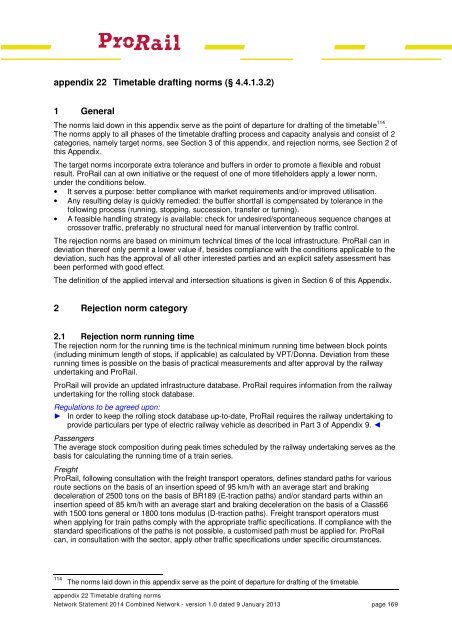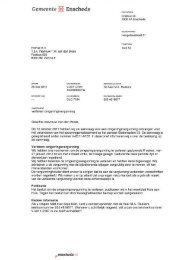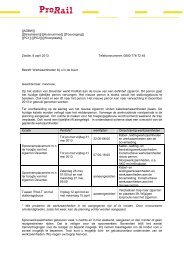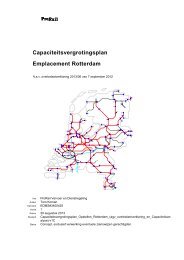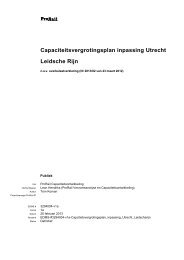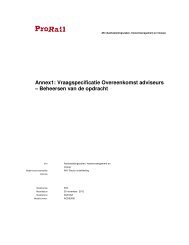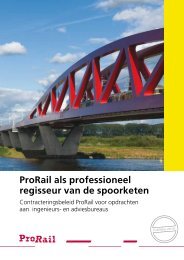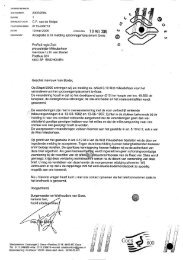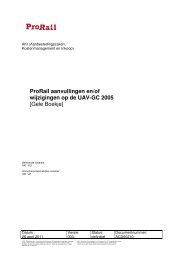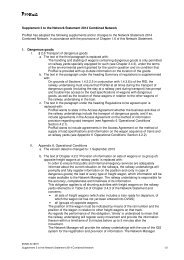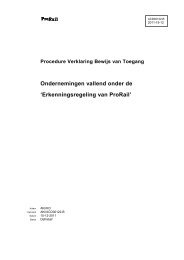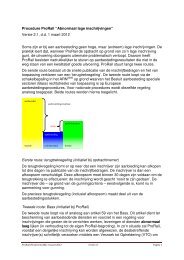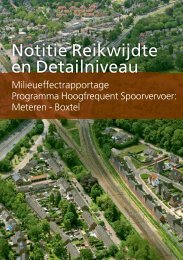Network Statement 2014 - ProRail
Network Statement 2014 - ProRail
Network Statement 2014 - ProRail
- No tags were found...
Create successful ePaper yourself
Turn your PDF publications into a flip-book with our unique Google optimized e-Paper software.
appendix 22 Timetable drafting norms (§ 4.4.1.3.2)1 GeneralThe norms laid down in this appendix serve as the point of departure for drafting of the timetable 114 .The norms apply to all phases of the timetable drafting process and capacity analysis and consist of 2categories, namely target norms, see Section 3 of this appendix, and rejection norms, see Section 2 ofthis Appendix.The target norms incorporate extra tolerance and buffers in order to promote a flexible and robustresult. <strong>ProRail</strong> can at own initiative or the request of one of more titleholders apply a lower norm,under the conditions below.• It serves a purpose: better compliance with market requirements and/or improved utilisation.• Any resulting delay is quickly remedied: the buffer shortfall is compensated by tolerance in thefollowing process (running, stopping, succession, transfer or turning).• A feasible handling strategy is available: check for undesired/spontaneous sequence changes atcrossover traffic, preferably no structural need for manual intervention by traffic control.The rejection norms are based on minimum technical times of the local infrastructure. <strong>ProRail</strong> can indeviation thereof only permit a lower value if, besides compliance with the conditions applicable to thedeviation, such has the approval of all other interested parties and an explicit safety assessment hasbeen performed with good effect.The definition of the applied interval and intersection situations is given in Section 6 of this Appendix.2 Rejection norm category2.1 Rejection norm running timeThe rejection norm for the running time is the technical minimum running time between block points(including minimum length of stops, if applicable) as calculated by VPT/Donna. Deviation from theserunning times is possible on the basis of practical measurements and after approval by the railwayundertaking and <strong>ProRail</strong>.<strong>ProRail</strong> will provide an updated infrastructure database. <strong>ProRail</strong> requires information from the railwayundertaking for the rolling stock database.Regulations to be agreed upon:► In order to keep the rolling stock database up-to-date, <strong>ProRail</strong> requires the railway undertaking toprovide particulars per type of electric railway vehicle as described in Part 3 of Appendix 9. ◄PassengersThe average stock composition during peak times scheduled by the railway undertaking serves as thebasis for calculating the running time of a train series.Freight<strong>ProRail</strong>, following consultation with the freight transport operators, defines standard paths for variousroute sections on the basis of an insertion speed of 95 km/h with an average start and brakingdeceleration of 2500 tons on the basis of BR189 (E-traction paths) and/or standard parts within aninsertion speed of 85 km/h with an average start and braking deceleration on the basis of a Class66with 1500 tons general or 1800 tons modulus (D-traction paths). Freight transport operators mustwhen applying for train paths comply with the appropriate traffic specifications. If compliance with thestandard specifications of the paths is not possible, a customised path must be applied for. <strong>ProRail</strong>can, in consultation with the sector, apply other traffic specifications under specific circumstances.114 The norms laid down in this appendix serve as the point of departure for drafting of the timetable.appendix 22 Timetable drafting norms<strong>Network</strong> <strong>Statement</strong> <strong>2014</strong> Combined <strong>Network</strong> - version 1.0 dated 9 January 2013 page 169


